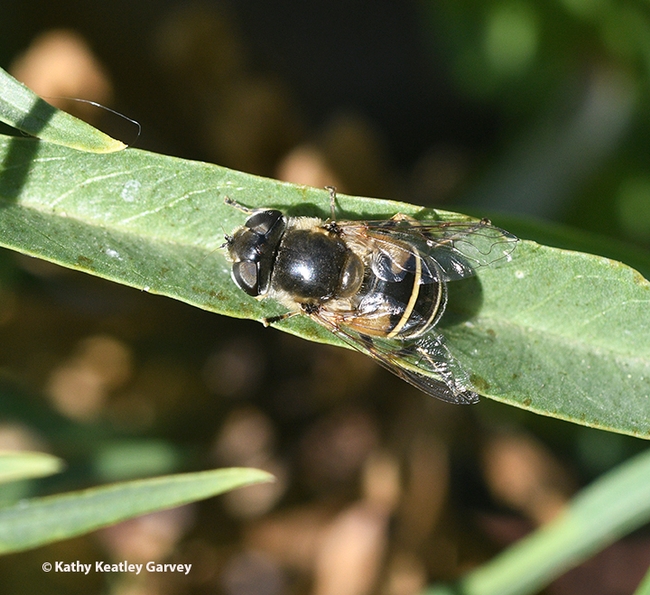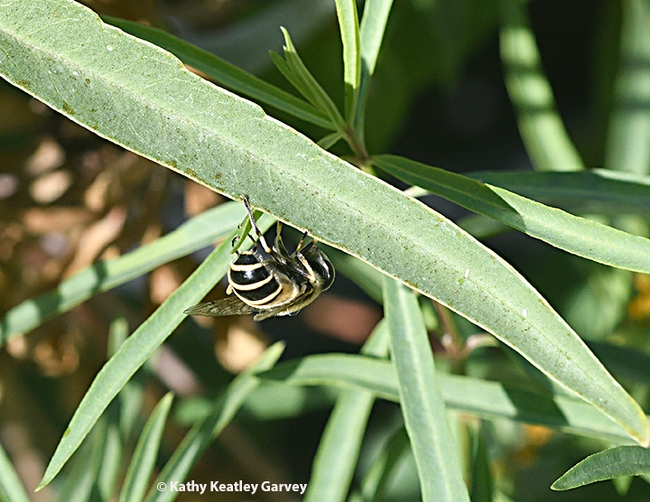Posts Tagged: Pollinators
Lawn-pocalypse! Surviving Drought
Ah, summer! The season of sunburns, pool parties, and… lawn droughts. If your once lush, green carpet now looks like a crunchy brown doormat, you're not alone. Let's dive into why your yard is staging a dramatic death scene and what you can do to...

Bermuda grass and weeds overtaking drought stressed turf grass.
Celebrate Pollinator Week with Citizen Science
Get ready to buzz with excitement because Pollinator Week is just around the corner! This international event, celebrated from June 17-23, 2024, is all about showing our support for pollinators. Pollinators are tiny heroes responsible for so much of the food we enjoy and the health of our ecosystems. All pollinators are essential to our world, from birds and bats to bees, butterflies, and beetles.
Why Pollinators Matter
Pollinators play a crucial role in agriculture, ensuring a bountiful supply of fruits, vegetables, and nuts. They help plants reproduce, which sustains our natural resources, prevents soil erosion, and aids in carbon sequestration. Imagine losing one out of every three bites of food – that's the reality we'd face without pollinators. Unfortunately, these vital creatures are increasingly at risk, and they need our help.
Join the iNaturalist Bioblitz!
The North American Pollinator Protection Campaign (NAPPC) Pollinator Communications Taskforce hosts an exciting community science bioblitz on iNaturalist to celebrate Pollinator Week. This is your chance to become a citizen scientist and contribute to necessary research on pollinator abundance and distribution across the US, Canada, and Mexico. All you need is a smartphone and a sense of adventure!
What's a Bioblitz?
A bioblitz is a fun and educational event where people come together to survey and document as many species as possible in a specific area within a set time frame. Using the iNaturalist app, participants capture and upload photos of the pollinators they encounter. The app uses image recognition technology and community verification to help identify species, creating valuable data for scientific research. This collaborative approach promotes community science by engaging a wide range of participants in documenting biodiversity, contributing to scientific research, and creating valuable datasets, all important in the UC Master Gardener Program.
Getting Started
To participate in the Pollinator Week 2024 bioblitz, you must create an INaturalist account and profile. You can use their website or their app. Then, you can start snapping photos of pollinators you see and upload them as observations to the INaturalist site or app.
Tips for Capturing Great Pollinator Photos
Taking photos of pollinators can be a bit tricky, but with these tips, you'll be snapping like a pro in no time:
- Approach slowly: Move slowly and take multiple shots as you get closer. If you have a long lens, use it to keep a distance and avoid startling the pollinator.
- Macro lens magic: To enhance your phone camera with a macro lens, hold a magnifying glass up to it. This will help you get those close-up details.
- Mind your shadow: Watch the sun's position to ensure your shadow doesn't cover the pollinator.
- Focus is key: Make sure the entire pollinator is in focus. Adjust your camera's aperture (f-stop) to get the best depth of field, and try to position yourself on the same level as your subject.
- Fast shutter speed: Use a fast shutter speed to capture quick movements, or use your phone camera's instant capture feature.
- Multiple angles: Take photos from various angles. Side, face, and wing shots are helpful for bees and flies. For butterflies, underwing photos are best, while the topside of their wings identifies moths.
Help Scientists Identify Pollinators
Understanding how scientists identify species can enhance your contributions. For insect pollinators, clear eyes, wings, and body shape images are vital. Side and above shots can reveal important details, and capturing color patterns on the abdomen or wings is especially useful for bees, beetles, and butterflies. Antenna shape is another critical feature for identification.
When uploading your observations to iNaturalist, you'll be asked for your identification suggestions, and the app will offer its own. Knowing what you've seen can help narrow down the options, especially since some insects mimic each other!
Be a Part of Something Big
Pollinator Week is more than just a celebration – it's a call to action. By participating in the iNaturalist bioblitz, you'll be contributing to the scientific community and helping protect our precious pollinators. So grab your camera, head outside, and join the fun! Let's work together to ensure a vibrant future for our ecosystems and food supply.
For more information on supporting pollinators in your garden, check with your local UC Master Gardener Program.
Weed control during pollinator habitat establishment.
Introduction: Pollinator insects are essential to produce many economically and nutritionally important crops grown in the western USA. These crops include blueberries, almonds, sunflowers, cucurbits, and many others. Almond pollination in California...
Amsonia: A Favorite with Pollinators
Amsonia, a plant native to the Northeastern USA, seems to be little known in the West. They are commonly known as bluestars on account of the shape and color of their flowers. I have never found it in local nurseries, but I have...
Syrphid Flies Are Pollinators, Too
Sometimes overlooked as pollinators are the syrphid flies, also known as "hover flies" or "flower flies." Unfortunately, they are often mistaken for honey bees. Hey, if it's a critter on a flower, it's a bee, right? Not necessarily! Syrphid flies...

A dorsal view of a syprhid fly sunning itself on a leaf. (Photo by Kathy Keatley Garvey)

The syprhid fly senses danger and slips under a leaf. (Photo by Kathy Keatley Garvey)

